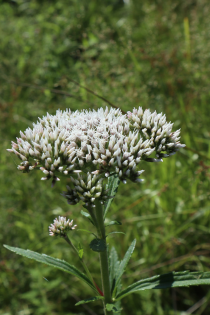As late summer arrives, Viles Arboretum is showcasing one of its most stunning displays of native flowers. The once-green fields are now coming alive with vibrant golds, purples, and pinks. This colorful transformation not only beautifies the landscape but also supports local pollinators. As you visit the Arboretum this late summer, take in the changing colors and patterns of the native plants. The evolving landscape highlights how well these plants adapt and thrive throughout the seasons. It's a great time to see their beauty and appreciate their role in the ecosystem.
Goldenrods

Highly abundant, showy yellow flowers that are spread across the fields at the Arboretum. There are many different species of goldenrod at the Arboretum. Next time you take a walk, look closely and see if you can observe some of the differences between them. Goldenrods are often wrongly accused of being the cause of allergies, although they are usually not the culprit. Goldenrod pollen is too large to carry far on the wind and is primarily distributed by insects. Instead, ragweed is most likely the cause of your recent allergy flare up.
Joe Pye Weed

Tall, pink fluffy flowers commonly found in lowland environments or wet areas. The coloring and growth habit of this plant often leads people to mistake it for a milkweed species, although they are not related. These hardy plants give even some of our more invasive species some competition and you may see it thriving among the purple loosestrife in ditches.
Blue Vernain

Tall, dark purple flowers found in the fields and lowlands. Sometimes mistaken for the invasive purple loosestrife, but the flowers are much darker and the growth habit and leaves are noticeably different up close
Common Boneset

Closely related to Joe Pye weed, but the flowers are white rather than pink. Prefers wet, poorly drained soil. You will find this growing in some of the wetter field areas at the Arboretum.
Mountain Mint

Our most asked about plant, mountain mint is a true favorite for the pollinators. This is the plant that you will find growing on the hill near the barn that is always covered in bees and other insects. While its flowers may appear rather inconspicuous to us, they are an important source of nutrition for the native insects. A super alternative to highly invasive non-native mint species. Next time you visit, crush a leaf between your fingers to smell their strong minty aroma.
Bee Balm

Also known as wild bergamot. Showy purple to pink globe-shaped flowers with a strong spicy aroma. Very popular with bees and hummingbirds and a popular choice for gardens. You can find this species growing in the fields closest to the Visitor Center. The flower petals are edible and make an interesting tea or salad addition.

